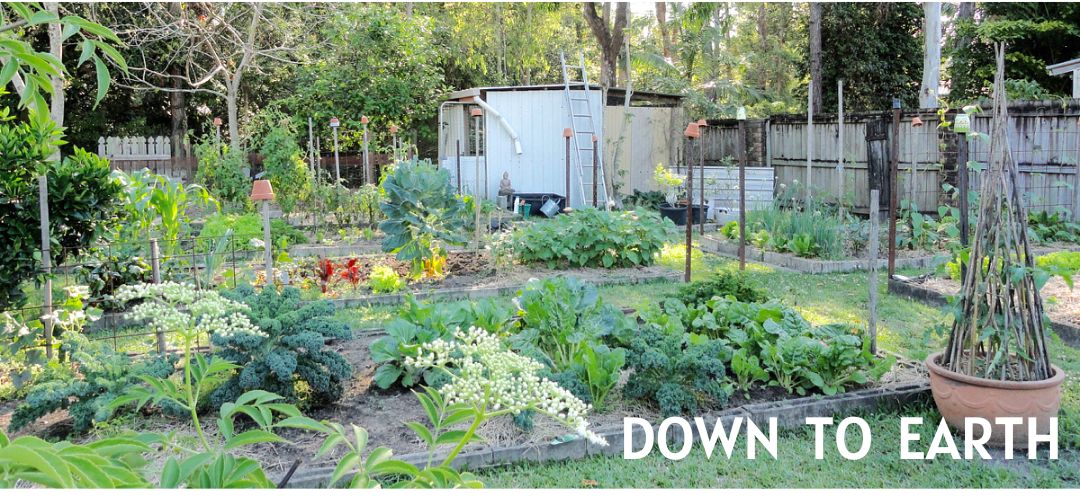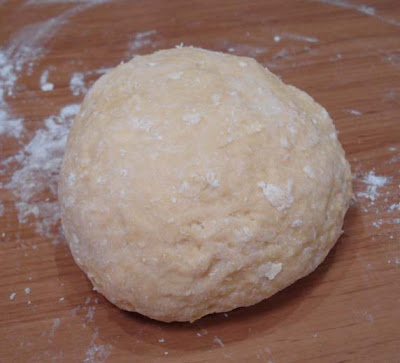PASTA TUTORIAL
Wash your hands thoroughly.
PASTA RECIPE for 4 - 6 people
500 grams (1lb) plain (all purpose) flour
4 medium eggs - taken from the fridge two hours before use
salt
- Make sure your working surface is clean and dry.
- Tip the flour and salt onto your bench. This is where you'll mix your pasta. You could also use a bowl for mixing, and if you're a little bit uncoordinated, that would be better for you. Eggs might escape.
- Make a well in the middle of the flour, making sure the walls of the well are high enough to contain the eggs. Break the eggs into the well.
- Using your index finger, break the egg yolks, then swirl your finger around the eggs, slowly incorporating the flour into the eggs. Keep mixing the eggs and the flour together, making sure none of the eggs escape out of the well.
- Mix until you have a firm ball of dough. The dough should be not too sticky and not too dry. If the dough is too dry, add half an egg shell of water to the mix. If it's too sticky, add more flour.
- Place the dough on a clean plate and cover it with a slightly moist clean tea towel and leave for 30 minutes.
- While you're waiting for the dough to settle, make your filling or sauce.
- I made ravioli yesterday - with a spinach and ricotta filling.
RAVIOLI FILLING RECIPE
1 kg spinach or silverbeet (chard)
1 onion, finely chopped
garlic
olive oil
3 eggs
250g ricotta cheese
fresh oregano and thyme
salt and pepper
breadcrumbs or polenta on standby, just in case
- Gently fry the onion and garlic in olive oil until translucent.
- Chop the spinach and cook it in with the onion for a few minutes.
- Put all ingredients, except the breadcrumbs/polenta, into a bowl and mix thoroughly.
- Cool the filling.
- Feel the filling. If it's too wet and sticky, add a small amount of breadcrumbs or polenta. I added about ¼ cup of polenta so I had a firm mix. When I put it on top of the pasta, it stood up without flopping or running.
- Set up your pasta machine. Now go back to your pasta and sprinkle the dough ball with a little flour. Cut the ball in two, flatten it out and run it through the pasta machine on its widest setting about ten times. If the kids are around, they can help you by turning the handle while you feed the dough into the machine.
- I used only half the dough I made, and froze the rest for use later.
- Putting it through the machine ten times will work the dough and make it smooth. You can see in the photo below that the dough is kind of lumpy. This is the second run through the machine.
- If you don't have a pasta machine, knead the dough for a few minutes to get that smoothness, then cut the dough in two and start rolling it out with your rolling pin. You need to keep rolling until you have a very thin dough.
- You'll end up with a very long thin piece of dough. Cut it in two in equal portions.
- Take dessertspoon portions of the filling and place them along the pasta dough, giving yourself enough space in between to cut the dough with an edge between each ravioli.
- Put the other piece of pasta dough over the top of the filling.
- Now get some sort of cutter - a cookie cutter, or scone cutter and cut out the ravioli.
- Lightly sprinkle some flower onto a clean plate and place the ravioli on top. They will stick to the plate if there is no flour on it. Don't pile them on top of each other. At this stage they're fragile and have to be handled with care. You might need two plates. If you intend making up all the dough, sprinkle flour onto your bench and place them on the bench until they're cooked or frozen.
- To cook the ravioli, boil water in a large saucepan and place the ravioli in. Continue a gentle boil. They will come to the surface after a couple of minutes, then cook for another five minutes.
- Pour into a strainer to drain off all the water.
- Serve with a little butter and a good sprinkle of fresh, finely grated parmesan.
If you make up all the pasta into raviolis, it will keep in the fridge for one day if you don't cook them all straight away. The ravioli may also be frozen: place the raviolis onto a lightly floured board or cookie sheet and place it in the freezer. When they're all frozen, take them off the board/sheet and store in a sealed plastic bag or container.
The pasta recipe above is enough for the amounts given for the ravioli filling. Just to clarify, you cut the dough ball in two - I used half and have the other half in the freezer to be used later this week. When you work the dough, you halve it again, but this time the two halves are used - one as the base of the ravioli and one for the top. I hope that makes sense.
You could also use this pasta recipe to make fettucini.
If you want to be more frugal with this recipe, use two eggs and enough water to form a firm dough. You could also make this pasta with no eggs, using only tap water or mineral water.
Pasta is a good wholesome meal that can be modified many ways. If you're learning to cook, pasta would be a great early addition to your cooking skills. If you've only ever eaten dry pasta, try this recipe, I'm sure you'll enjoy it.











